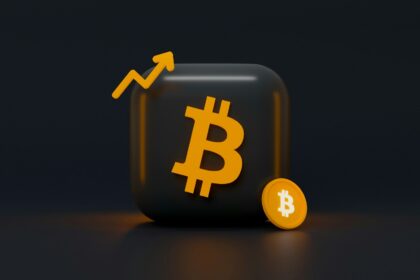Access tokens designed for specific platforms provide users with direct interaction capabilities within a particular ecosystem. These digital assets serve distinct functions such as granting entry to services, enabling voting rights, or unlocking premium features. Their primary usage revolves around facilitating participation and rewarding engagement without representing ownership stakes.
The functionality of such tokens often includes granting holders the ability to influence platform governance or access exclusive content, making them integral to community-driven projects. Unlike conventional currencies or investment instruments, these digital units emphasize practical application over speculative value.
When evaluating a project’s ecosystem, recognizing how these tokens operate can clarify their purpose. They act as keys that unlock various utilities and benefits tied closely to the platform’s design and objectives, ensuring that users gain tangible advantages through active involvement.
Understanding the Role and Function of Platform-Specific Digital Assets
Platform-specific digital assets serve as integral components within blockchain-based ecosystems, enabling access to various services and features. Their primary role is often linked to granting holders certain rights or capabilities on a decentralized network, such as voting on governance proposals or paying transaction fees. This differentiates them from currencies designed purely for value transfer, as their function centers around interaction within a particular environment.
The main purpose of these assets lies in facilitating specific actions or unlocking features inside decentralized applications (dApps). For example, in Ethereum-based systems, some assets allow users to participate in staking mechanisms or access premium functionalities. Such usage models emphasize utility beyond simple exchange value, aligning the asset’s existence closely with platform operations.
Detailed Insights into Usage and Applications
Usage scenarios for these digital units vary widely depending on their originating platforms. Consider Filecoin’s native asset: it acts as a means to purchase storage space on a decentralized network rather than merely serving as an investment vehicle. Similarly, Binance Smart Chain issues tokens that provide reduced trading fees or exclusive participation rights within its ecosystem.
- Access Rights: Granting entry to restricted features or services within applications.
- Payment Mechanism: Covering operational costs like transaction fees or service charges.
- Governance Participation: Enabling stakeholders to influence development decisions via voting.
This multi-layered functionality showcases how these instruments integrate into broader infrastructure, emphasizing practical engagement over speculative holding.
The technical design of such assets involves smart contracts programmed to enforce rules tied to their intended role. This ensures automatic execution of functions like entitlement verification or fee deduction without intermediary involvement. The underlying distributed ledger technology guarantees transparency and security throughout these processes.
A deeper examination reveals that the success of these instruments depends heavily on how effectively they align incentives among participants and maintain consistent demand through real use cases. Projects failing to establish clear functional purposes often experience diminished engagement and token value erosion. Therefore, understanding specific platform mechanics is critical before committing resources.
If you aim to explore this segment further, start by identifying platforms offering tangible utilities aligned with your interests–be it data storage, financial services, gaming access, or governance participation–and analyze how their issued assets enable those interactions practically. Gradually experimenting with small transactions can also build confidence while illustrating the dynamic relationship between asset holdings and network benefits.
Defining Utility Token Functions
Access to specific features or services on a decentralized platform is the primary role of these digital assets. Such coins serve as keys, granting holders entry to perform actions like voting in governance, paying for transaction fees, or unlocking exclusive content within a system. Their design ensures that ownership directly correlates with the ability to utilize particular functionalities embedded in the ecosystem.
The purpose behind issuing these instruments often ties closely to incentivizing user participation and supporting the operational mechanics of their respective networks. For example, some projects distribute them to reward contributors who provide valuable resources such as computational power or data validation. This approach aligns stakeholder interests with platform growth and sustainability.
Core Functions Within Decentralized Environments
These digital units operate primarily by enabling interaction between users and applications built atop a blockchain network. They do not represent ownership stakes or claims on profits but instead function as transactional tools that facilitate engagement. A notable case is Ethereum’s ERC-20 standard tokens, which empower developers to create diverse applications requiring specific asset exchange mechanisms without affecting governance rights.
Additionally, certain variants allow holders to access premium features unavailable to non-holders, thereby creating tiers of service based on possession levels. For instance, platforms offering decentralized storage might require these assets for reserving space or increasing bandwidth limits. Such utility-driven models help shape user behavior while maintaining system integrity through usage-based cost structures.
- Enable payments for services rendered within a network
- Provide voting rights related only to project decisions, excluding financial dividends
- Serve as collateral in decentralized finance (DeFi) protocols without implying equity ownership
- Act as redeemable credits for discounts or rewards inside an ecosystem
Their application extends beyond mere transactional use; they can also function as reputation indicators or proof of participation in community activities. Certain platforms implement token-based badges reflecting contribution levels or expertise areas, integrating social dynamics into technological frameworks. This multifaceted utilization enhances both user experience and project robustness by fostering trust and commitment.
A comprehensive understanding of these functional roles clarifies their distinction from other categories like security tokens, which represent investment contracts with financial returns. This differentiation is crucial when analyzing regulatory requirements and technical implementations across various jurisdictions. Recognizing how each variant supports its underlying infrastructure helps users make informed decisions aligned with their objectives and risk tolerance.
How Utility Tokens Differ
Tokens designed for specific applications serve distinct functions depending on their intended purpose within a network or platform. Unlike assets created primarily for investment, these coins grant holders access to particular services or features, often acting as a form of digital permission slip. For instance, some tokens enable users to participate in decentralized applications by granting usage rights or unlocking premium content, directly linking the token’s value to its functional role rather than speculative demand.
The differentiation among such instruments largely hinges on functionality. Certain units might allow for voting rights in governance protocols, influencing the direction of a project’s development. Others act as payment mechanisms within ecosystems, facilitating transactions without converting to traditional currencies. This distinction emphasizes their operational role–serving as keys that open doors to various digital resources rather than mere stores of value.
Technical and Practical Differences
Diverse implementations illustrate how access credentials vary in complexity and scope. Take the example of network fuel tokens like those used in Ethereum; they are consumed when deploying smart contracts or executing operations, representing a direct correlation between token usage and computational effort. Conversely, platforms like Filecoin utilize similar digital assets to incentivize data storage providers, blending utility with economic motivation embedded into the protocol mechanics.
Understanding these nuances involves recognizing that the purpose behind issuance determines technical behavior: whether tokens are burned upon use, staked for participation rights, or held passively to unlock ongoing benefits. Such mechanisms influence user engagement models and shape ecosystem sustainability by aligning incentives with real-world application demands rather than speculative trends.
Using Utility Tokens Practically
To effectively apply digital assets designed for specific functionalities, it is necessary to understand their core purpose and operational mechanisms. These assets primarily serve as instruments that grant holders access to particular features or services within decentralized platforms, ensuring seamless interaction with underlying protocols.
Such digital credentials facilitate various forms of engagement, ranging from participation in governance processes to obtaining premium content or executing smart contracts. Their practical usage depends largely on the design parameters established by developers and the ecosystem’s demands.
Purpose and Functionality of Access Instruments
The main objective behind these specialized digital units lies in enabling users to interact with decentralized applications (dApps) or platforms without relying on traditional intermediaries. For example, some platforms issue access rights allowing holders to use cloud storage space or gain entry to exclusive marketplaces. This direct correlation between ownership and usage rights illustrates the precise function embedded within these components.
Moreover, these elements often feature programmable properties embedded via smart contracts, which automate certain actions when predefined conditions are met. This increases operational efficiency by minimizing manual intervention and enhancing trust through transparent execution rules.
- Access Control: Users receive permissions based on possession of such assets, streamlining authentication without conventional credentials.
- Service Payments: They act as internal currency substitutes within ecosystems, used to pay fees or purchase services.
- Incentives: Some systems reward participants who contribute resources or perform specific tasks by distributing these tokens as compensation.
The practical application can be illustrated through decentralized finance (DeFi) protocols where holding designated units allows participation in yield farming or liquidity provision. In gaming environments, ownership grants entry to special levels or items unavailable otherwise.
A detailed examination of blockchain-based file sharing networks reveals how these instruments manage bandwidth allocation dynamically among users. The system measures demand and distributes usage rights proportionally according to token holdings, optimizing resource utilization efficiently.
The versatility of these digital assets makes them suitable for diverse industries beyond finance alone. For instance, supply chain management employs them to confirm authenticity and traceability of goods by encoding access permissions for various stakeholders involved in logistics chains.
User experience improves significantly when these tokens are integrated into wallets and interfaces supporting straightforward management of entitlements. Clear visualization tools help newcomers comprehend their balance’s impact on service eligibility or voting power, fostering confidence during initial interactions with decentralized systems.
An effective approach for beginners involves experimenting with test networks where acquiring such units does not involve real financial risk but provides hands-on familiarity with their utility functions. Tutorials guiding step-by-step transactions allow newcomers to witness firsthand how holding different quantities modifies available capabilities within a platform.
This gradual learning path reduces apprehension while highlighting the tangible benefits derived from engagement through these programmable digital keys. Gradually building knowledge about their role encourages more informed decision-making regarding participation in emerging blockchain ecosystems tailored around specific user needs and preferences.
Conclusion: Navigating the Risks of Access Tokens in Decentralized Platforms
Access mechanisms embedded in digital asset systems require thorough scrutiny due to their dependency on platform stability and governance models. When a usage instrument’s function is tightly coupled with a single ecosystem, any disruption–be it technical failure, regulatory intervention, or economic shift–can directly impact its practical value and utility.
For instance, a token designed solely for granting service permissions within an application loses significance if that platform suffers downtime or alters access rules unexpectedly. This highlights the critical need for users and developers to evaluate not only the immediate benefits but also the sustainability of the underlying infrastructure supporting these assets.
Key Technical Insights and Future Outlook
- Platform Dependence: Access instruments often reflect the health of their hosting environments; decentralized platforms with robust consensus mechanisms tend to offer more resilient usage rights compared to centralized counterparts.
- Regulatory Uncertainty: Since many jurisdictions remain ambiguous about categorization, holders face legal ambiguity that might affect transferability or legitimacy of these rights.
- Functionality Scope: Limited functional scope restricts adaptability; tokens tied exclusively to narrow use cases risk obsolescence as platform needs evolve.
- Security Vulnerabilities: Smart contract flaws or exploits can compromise access controls, resulting in potential loss or misuse of tokens representing service privileges.
The trajectory points toward integrating multi-platform compatibility and enhanced governance frameworks to mitigate systemic risks. Emerging standards aim at creating interoperable access credentials that retain value even amid shifting technological landscapes. Such evolution promises more reliable and flexible instruments that empower users beyond singular ecosystems.
Understanding these dynamics equips participants with better decision-making tools regarding acquisition and deployment strategies. Approaching such access units as dynamic components within broader networks rather than isolated assets encourages prudence and innovation in their adoption and design.





